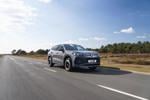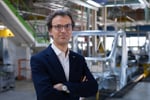Tim Slater, managing director, transport, DHL Supply Chain, looks at how the urban logistics industry has had to change.
Britain’s transport systems have recently been the focus of much media attention. From the future of the HS2 railway network to increased concern about road safety, getting about the country in the most efficient, effective and safe way is high on the agenda for many.
In light of this, there is an increasing need to ensure that deliveries are both safe and sustainable. DHL recently launched a gas powered concept vehicle, designed to be cleaner, safer and quieter and to discuss the impact that the future urban landscape will have on logistics and delivery vehicles.
According to figures published by the United Nations in 2014, around 54% of the world’s population now live in urban areas and this is expected to increase to 66% by 2050. Ensuring that deliveries can be made safely in these densely populated areas is vital and DHL’s concept vehicle includes a 360° ‘Birds Eye View’ camera with in cab display and hard drive recording to improve the driver’s field of vision. The vehicle also incorporates a new cab design that improves the driver’s sight lines and increases the visibility of vulnerable road users. Changes such as these have always been important considerations for fleet operators, but with the growing urban population and need to carry out more deliveries, such features will soon be vital.
This population increase is also likely to cause further urban congestion challenges. Reducing congestion by moving deliveries out of the morning peak is key to TFL’s post-Olympic legacy, ‘Delivering a Road Freight Legacy’. To do so, many deliveries may now be made at night and so creating a quiet vehicle to reduce noise is a key consideration for fleet operators. For example, DHL’s concept vehicle includes a new ‘Otto Cycle’ engine that can reduce engine noise by up to 50% when compared to a standard diesel engine.
Additionally the vehicle uses Compressed Natural Gas (CNG) and Bio-Gas to significantly reduce its carbon footprint and harmful pollutants emitted. With greenhouse gas emissions a key consideration for many businesses and global warming a prominent concern to all, utilising this type of technology could help to create a greener, cleaner future for the planet.
The growth of the urban environment brings positive effects for many businesses. From the potential to increase sales to the opportunity to explore new channels of commerce, this surge in urban living has its benefits. However, as these changes take place, the need to consider the effect of the urban landscape on logistics bears increasing importance and actions must be taken to ensure delivery vehicles are fit for the future. It is vital that the transport industry and fleet providers work together and take the lead in ensuring that our cities are prepared for this growth, making the changes required to create an efficient, safe and sustainable future for urban logistics. Considering new, innovative solutions - such as the concept vehicle DHL has designed – is the first step to success.













Login to comment
Comments
No comments have been made yet.